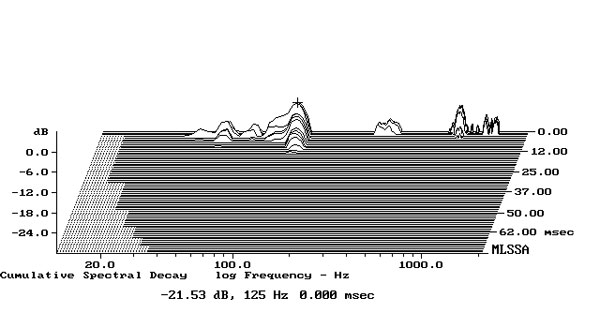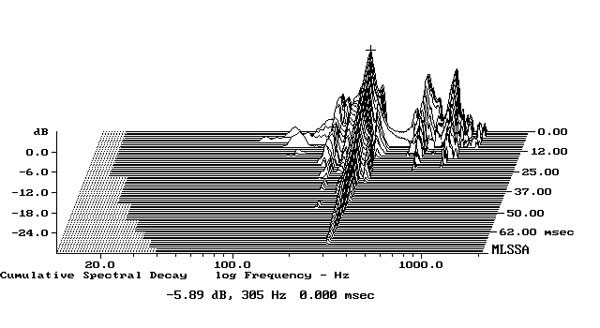Lets talk about the loudspeaker cabinet. 
- in Genelec 8361 its made of metal , a guess is that its about ten times ( correction:130 times ) as stiff than ordinary MDF. As a former DIY:er , I know that the stiffness of the cabinet do make a difference when playing music - more stiffness the better sound and the less time-smear of the signal. Very easy to hear when you play a piano recording and listen what the left hand is playing. With MDF each tones get slightly detached because of the resonanses about 400 Hz . Using chipboard is even worse, lowering the resonanses with a lower Q, blurring the exact pitch of every tone.
My own Genelec 8340 loudspeaker with metal cabinet have its resonance in the cabinet wall above 1000 Hz, with very high Q and low level. My former DIY construction, extensive crossbraced in MDF had its resonance about 600 Hz, much higher than most MDF boxes. Inspite of that , my Genelecs sound much more articulated when playing a piano recording - the walls of the cabinet box are apparently making a difference.
This is a very important thing I think, thats mostly underrated - If I would buy a 10 K ( dollar ) loudspeaker it would shurely have a cabinett material thats really stiff, because it makes a difference in sound. Read about Alon Wolf :
 www.kineticdiecasting.com
www.kineticdiecasting.com

- in Genelec 8361 its made of metal , a guess is that its about ten times ( correction:130 times ) as stiff than ordinary MDF. As a former DIY:er , I know that the stiffness of the cabinet do make a difference when playing music - more stiffness the better sound and the less time-smear of the signal. Very easy to hear when you play a piano recording and listen what the left hand is playing. With MDF each tones get slightly detached because of the resonanses about 400 Hz . Using chipboard is even worse, lowering the resonanses with a lower Q, blurring the exact pitch of every tone.
My own Genelec 8340 loudspeaker with metal cabinet have its resonance in the cabinet wall above 1000 Hz, with very high Q and low level. My former DIY construction, extensive crossbraced in MDF had its resonance about 600 Hz, much higher than most MDF boxes. Inspite of that , my Genelecs sound much more articulated when playing a piano recording - the walls of the cabinet box are apparently making a difference.
This is a very important thing I think, thats mostly underrated - If I would buy a 10 K ( dollar ) loudspeaker it would shurely have a cabinett material thats really stiff, because it makes a difference in sound. Read about Alon Wolf :
Why Should You Use Aluminum Speaker Parts? |
Last edited:





